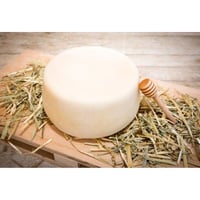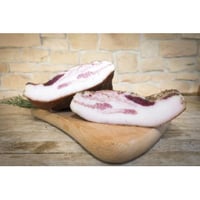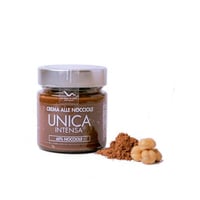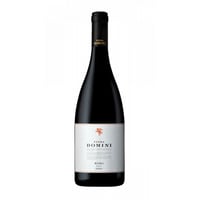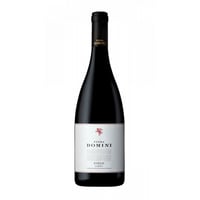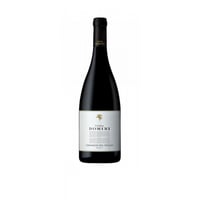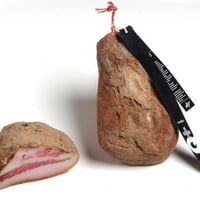Typical Products of Lazio
Are you looking for typical Lazio products? On our shop you can find Lazio excellences, typical Roman products, traditions of companies that aim to preserve flavors handed down for generations and that make up, in fact, the food and wine culture of our country. A real itinerary of taste that passes, in this section, from Lazio and its typical features.
Spaghetti & Mandolino has always been synonymous with the pursuit of &' excellence: Lazio awaits you!HOW WE SHIP TYPICAL LAZIO PRODUCTS
Spaghetti & Mandolino has always been synonymous with quality: we are l&' the only e-commerce in Italy that guarantees the best typical Lazio products of excellence for sale online and, as such, they deserve shipping and packaging in accordance with standards that preserve their properties, freshness and l&' integrity of every single product thanks to special freshness-saving packaging and packages.
Typical Products of Lazio: News
Inspirations with Typical Products of Lazio
Typical Products of Lazio: online sale
Our quintessential central region. It houses the capital, Rome, the political center of Italy. Lazio is a very varied territory with an extension that goes from Tuscany to Campania, from Umbria to Molise. Also in this case, as in the case of other Italian regions, the presence of a large metropolis tends to centralize all interests on it. A engulfing effect that takes attention away from simpler realities but of great vital importance for the history and economy of the territory.
Lazio is a region with a very long coastline that extends from Montalto di Castro to beyond Formia. Nature is one of the qualifying elements of this complex Italian region, rich in parks and small lakes, passes from the clay that stretch towards the Tuscan Maremma in the upper Viterbo area, up to the green lands covered with forests and coppice woods in the land bordering Umbria in the territory of Orte.
The Reatino deepens its extension to look at the Adriatic Sea in the Lioness Apennines, in the Amatriciano and in that land tormented by tectonic phenomena that caused the disastrous earthquake of 2016. The Simbruini Mountains Natural Park and the Abruzzo National Park create natural boundaries between the two small central regions up to Cassino. Further south c&' on the other hand, it is the Monti Aurunci park that extends towards the Campania border in Frusinate.
Rome represents the watershed between the north and the south of the region and seems naturally equidistant between Tuscany and Campania. Along its coasts, there are towns such as Tarquinia, Santa Marinella, Ladispoli, Fregene and the beaches of Ostiense, the very long coastline of Anzio up to Sabaudia and the promontory of Circeo. A long journey close to the waves until you reach the beautiful Gaeta and Formia from whose shores you can see the small islands of Ponza and Ventotene in the distance.
Lazio's lands are enormously rich in history: this is where Rome, one of the greatest modern civilizations, was born. The Romans developed right along the seven Capitoline hills and their history is embedded in that of other great civilizations such as that of the Etruscans and the first Italic peoples in the north and south of the peninsula. Rome becomes the center of the known world and represents the 'light' of humanity. But every village, every single piece of land in this region could be hidden and told in history books. Rome “caput mundi” represented the virtuous intertwining of peoples, millenary traditions, religions, and shared humanity that has conditioned even the simplest aspects of human life.
The Roman table has always been an open door to the then known world. Wines from Campania Felix and from eastern Georgian lands, citrus fruits from southernmost and eastern lands, fruits and vegetables from the Roman countryside, fish from the depths of the Mediterranean, game from Alpine and Apennine forests, exotic foods, Spanish oils, African dried fruit, persimmons from Tuscany, fatty cold cuts from the Po Valley, etc.
In all this flow of imperial delicacies, the people of Lazio, have nevertheless managed to impose their food excellence, typical products, flavors
TYPICAL LAZIO PRODUCTS
From the sea to the mountains, Lazio's production is extremely varied and has achieved international fame thanks to the Papal State, which has always been the true cultural route for the people of Lazio to the world. Not only raw materials but real culinary preparations that have become the true emblem of Italian cuisine in the world. Carbonara and Amatriciana are, for example, two of the most imitated pasta today from the Far East to South America.
Even today, there are many typical products that have reached the PDO and PGI, in addition to the protection of Slow Food and De.Co. A complex of raw materials and processed products of the highest quality and historical value. And for each of them you could write anecdotal books, because the history of this land is rich in events.
The area best known for wine production is certainly that of the Castelli Romani. Never taken too seriously by popes and emperors, but loved by the people, wines like Frascati, East! East! East! of Montefiascone and Cesanese are the true essence of Roman and Lazio history. Orvieto DOC, Colli Albani DOC, Aleatico di Gradoli and others such as Bianco Capena, represent the evolution of a land that has been increasingly perfected and has now reached a good level of quality with the addition of very interesting international vines such as Viognier or other aromatic herbs along the Roman coast. Experimentations by visionary wineries that have led to excellent results, also certified by international critics.
But it is in terms of typical food production that Lazio becomes an extraordinary and unique region of its kind. A very important reality for the production of pasta filata cheeses such as Mozzarella di Bufalo Campana DOP, which finds extraordinary excellence in the province of Latina and Frusinate. The many types of cheese such as, for example, the Genazzano cheese, the Cacio Fiore, the Caciotta of the Laga mountains, the Pecorino Romano PDO.
How can we forget the cereals and legumes for which Roman and Lazio civilization became famous in the world: the Cicerchia di Campodimela, the beans in their different expressions and among these the cannellino bean from Atina, the bean from Gradoli's purgatory, then the farro dei Monti Lucretili, the lentils of Ventotene, Onano and Rascino.
The production of bread is important with the very famous Genzano bread but also those of Lariano, Lugnola, Montelibretti, Veroli, Allumiere and Panicella di Sperlonga. Among the exceptional vegetables, the Roman Artichoke and the Turquoise Potato.
Then the cold cuts that are the basis of important recipes such as the Amatrice pillow, the Roman Porchetta, the Roman Abbacchio, the Tuscia mountain ham, the Castellino salami, the sausage of the Lepini Mountains of black pork.
Among the fresh pasta, the Strozzapreti, which in Lazio... is all a saying.
All you have to do is discover our range of typical Lazio products for sale online! Enjoy your navigation and enjoy your meal!




